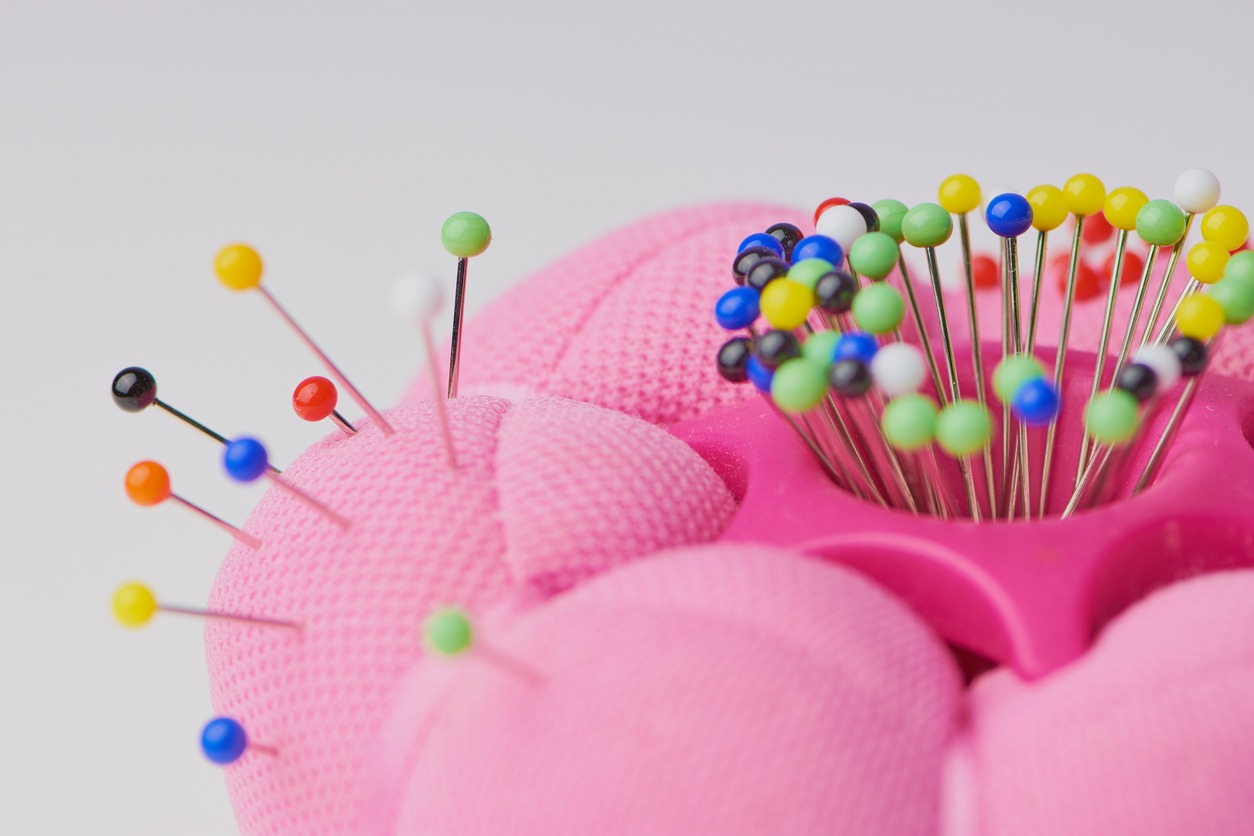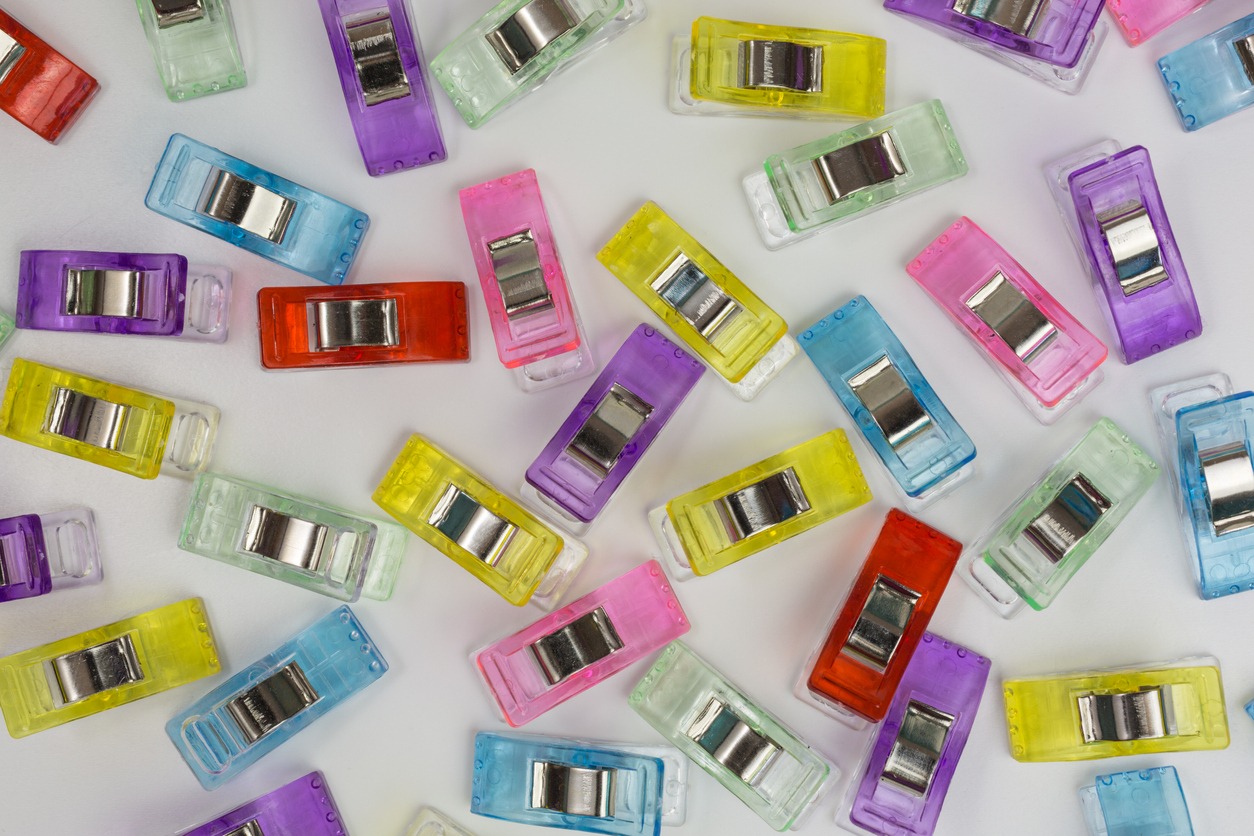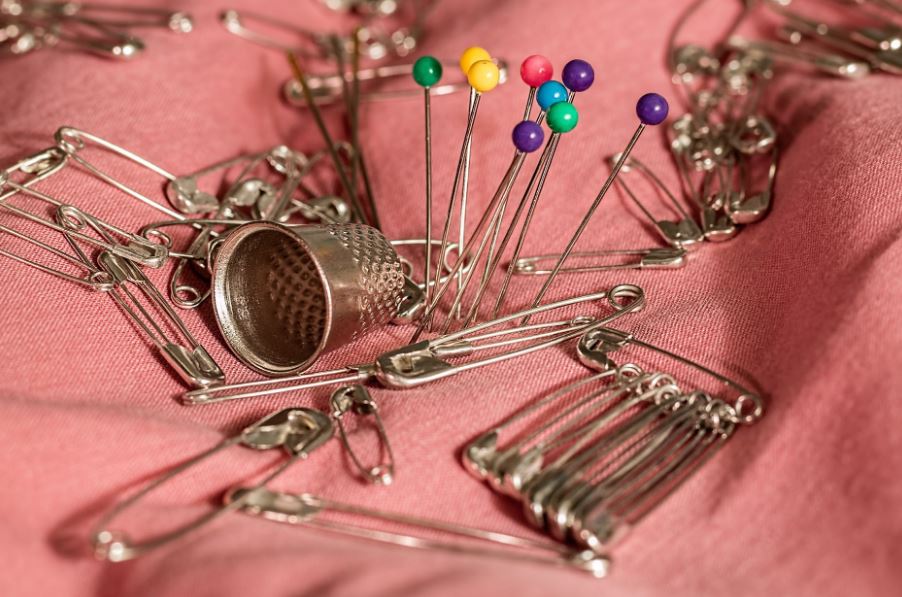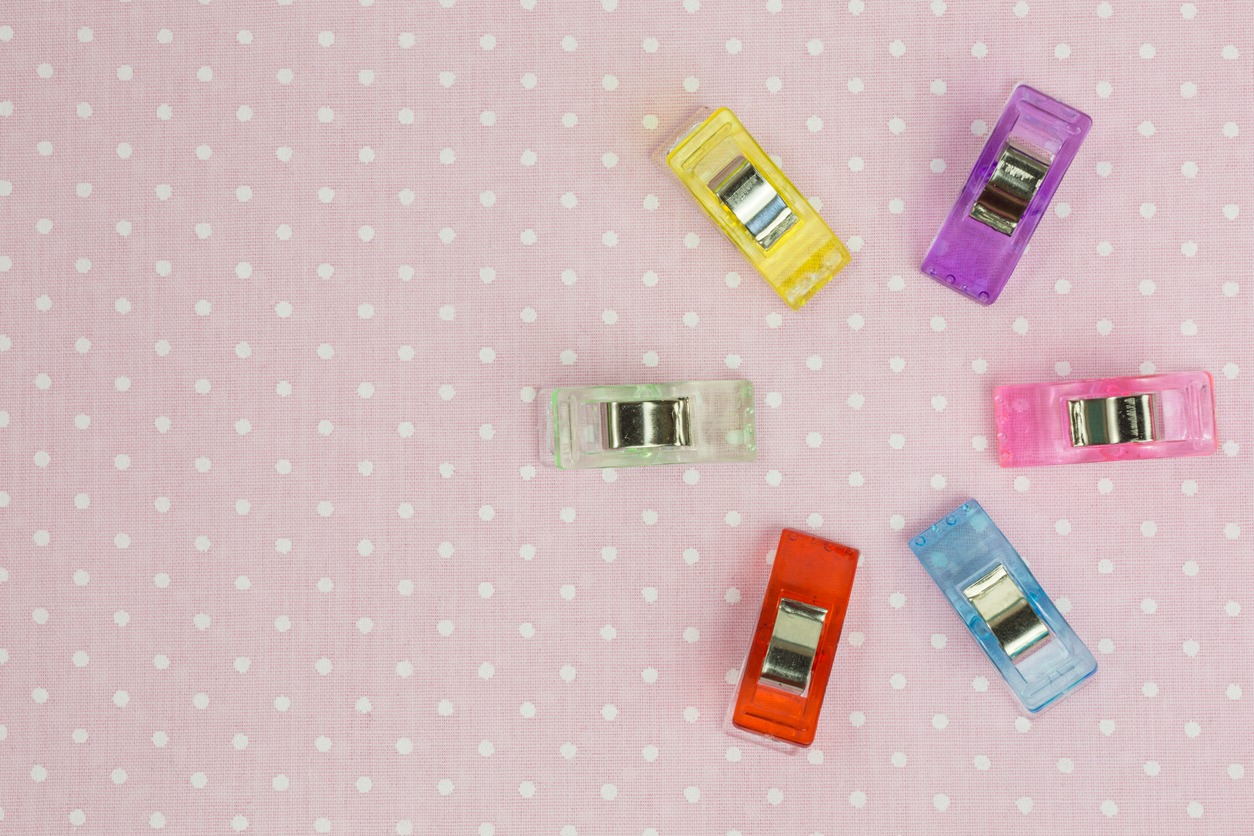Every sewist has a stash of necessities, and pins are in every one of them. However, even a simple concept like pins will face competition, and today’s contenders are those bright, snappy clips.
This article is for you if you’ve never heard of them before or have always wondered which is better between sewing pins and clips. Join us as we compare and contrast their advantages and disadvantages.
Sewing Pins
Pins of various lengths, designs, materials, and purposes hold the sewing world together. We’ll stick to the basics for now, but let’s go over some of the highlights of the most common pins you’re likely to encounter: ballpoint, dressmaking, and t-pins.
Ballpoint Pins
Ballpoint pins are specifically designed for knit and stretch fabrics, whether in the machine or holding pieces together. When pierced, sharp-pointed pins tend to cut through the fabric, whereas the rounded point of ballpoint pins pushes the threads up and around the blunt tip, preventing holes from wearing out your seam allowance. Because ballpoint heads are made of plastic, you must exercise caution when pressing around them; otherwise, melted plastic may damage your iron, pins, or, worse, your prized garment.
Dressmaker Pins
Dressmaker pins (also known as silk pins) are the Swiss Army Knife of pins and can be used on almost any project, from housework to garment assembly. These pins have an extra-fine point that allows them to slide between fabric threads without damaging them.
Authentic dressmaker pins are made of metal, but some variations have plastic heads for better visibility. These pins work best when combined with light fabrics.
T Pins
These pins are the travelers of crafting, with a name that is true to their shape and can be found in many realms ranging from corkboards to woodworking. In fabrics, these sturdy pins are made entirely of metal and are ideal for heavy-weight material (think upholstery and duck cloth) and loosely woven fabric, where other needles are prone to slipping out between thread strands.
Sewing Clips
Sewing clips resemble small plastic hair clips. However, instead of an interlocking grip for holding hair, these clips have a flat grip for holding a few layers of fabric.
These clips are brightly colored plastic clamps composed of three parts:
- An upper plastic curved piece
- A lower plastic flat piece
- A metal tension spring
They’re made to spring open and close easily while securely holding pieces of fabric together as you sew.
They’re fantastic for holding multiple layers of fabric together and working with various fabrics. Although they were originally designed to assist quilters with basting, sewists quickly discovered that they work well for various projects, including dressmaking, bag-making, and more!
Furthermore, they are preferred over pins when working with silk, leather, vinyl, and other fabrics where pinholes are undesirable. You will also find these tips for using sewing clips very helpful.
Pros and Cons
Here is a list of the advantages and disadvantages of both sewing accessories. After reading these, you can decide which item is superior. Remember that both items have a place in the sewing industry.
Pros of Pins
- Inexpensive
- Simple to use
- Excellent for long hems
- Available in various sizes to accommodate your fabric needs
- Do not easily break as clips can
- It can be left in place and sewn over
- They can be ironed over
- Take up little room in your drawers, sewing area, and sewing kit
- It’s made of metal and will last a long time
Cons of Pins
- A thimble is required to use them
- You can’t use it with every fabric available
- If placed near heat, plastic heads may melt
- It can be difficult to maintain at times
- It’s difficult to keep everything together while quilting
- When you’re not looking, it can prick you
- It’s easy to overlook when you’re immersed in fabric
- When dropped, it is easy to lose
Pros of Clips
- Strong
- Simple to use
- Keeps the majority of fabrics together
- You can hold patterns on the fold without causing damage to the pattern.
- Excellent for lightweight, silky materials
- It’s not very heavy
- Leaves no holes
- Durable
- Made of hard plastic and can withstand heat
Cons of Clips
- Quite large
- Can be costly
- Fabric gains weight as a result of this
- It may get caught on a table or sewing machine
- It may not be easy to maneuver the fabric
- May break easily
- You can’t sew or iron over them the way you can with pins
- Must be removed before reaching the foot
Both have drawbacks that will not prevent them from being used. They work well whenever you need them and add a lot to your sewing project. The bad comes with the good, and you should exercise caution when using either accessory.
Side by Side Comparison of Pins and Clips
| Sewing Pins | Sewing Clips | |
| Price | Lower in price | Cheaper overall but more pricey per piece |
| Safety | There are legitimate safety concerns | There are no safety concerns |
| Size | Small, but if you’re not paying attention, you might miss it | Larger and more visible but bulky |
| Placement | You can place pins wherever you want on the project | Only secures the edges |
| Durability | It dulls, bends, or rusts over time | Breakable |
| Grip Strength | Very strong and suitable for thin layers | Although the fabric is strong, it has the potential to shift and slip; Allows for extra-thick fabric layers |
| Accessibility | It is widely available in local stores and online | New to the market and is mostly available online |
When Should You Use Sewing Clips vs. Pins?
Of course, you can have sewing clips and pins in your sewing machine kit.
You can use your pins when trying to align dart legs or any other pattern markings that demand precision. Pins are also useful when sewing elastic to fabric and stretching the elastic as you sew. Similarly, pins are more secure when sewing a binding or band where one fabric sheet is stretched to meet the other.
On the other hand, sewing clips can be viewed as technological advancement. You can use clips with materials that pins cannot.
Vinyl is a good example. Putting a pin through this material and having it stay in place is nearly impossible. Clips take up the slack and easily hold the vinyl together.
Tulle is another example. Pins usually slip out once they’ve been inserted into the fabric. You can use clips to hold tulle together while making the first or last stitch and all stitches in between. That makes swinging tulle a lot easier.
So, if you’ve ever been undecided about which is superior, remember that each has strong and weak points, and no one is truly superior to the other. Make sure you have all of these accessories in your kit to enjoy the best of both worlds. You never know when you’ll need one or the other.




